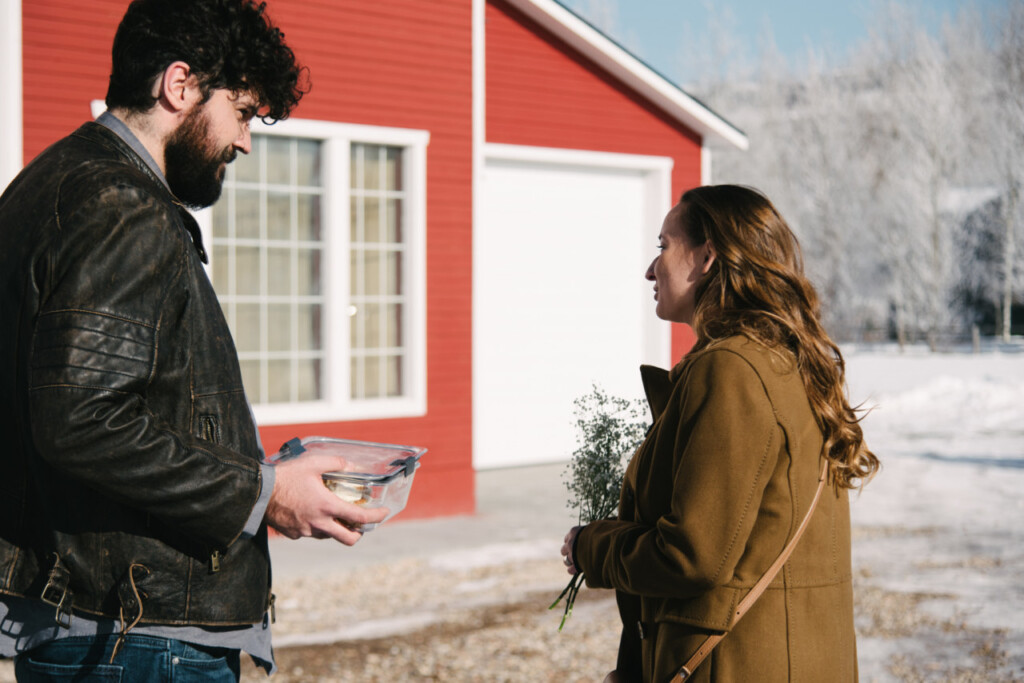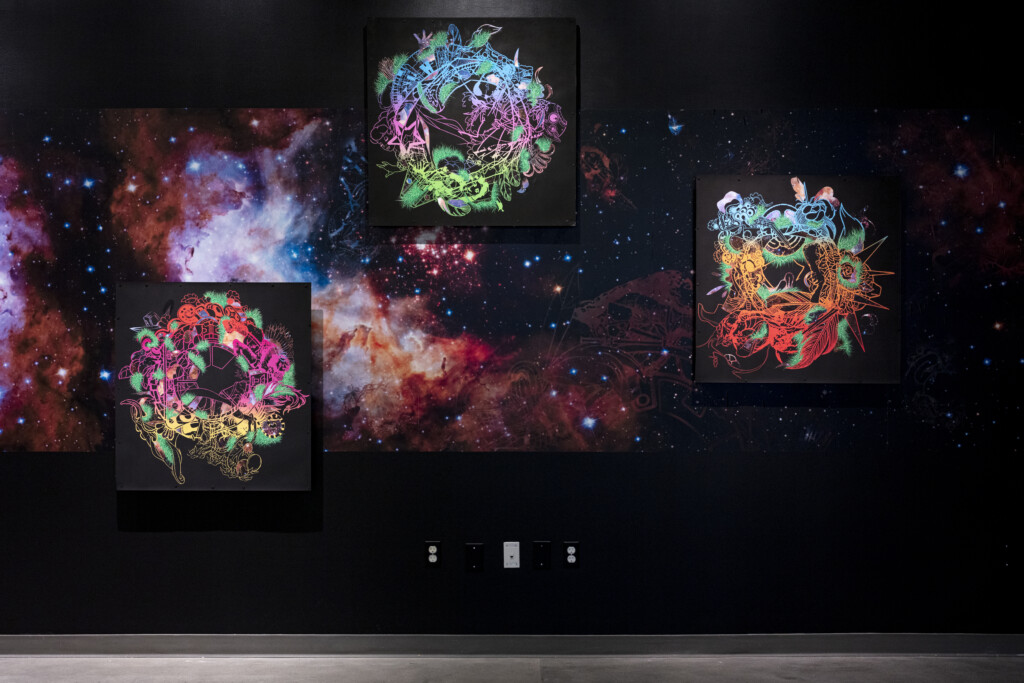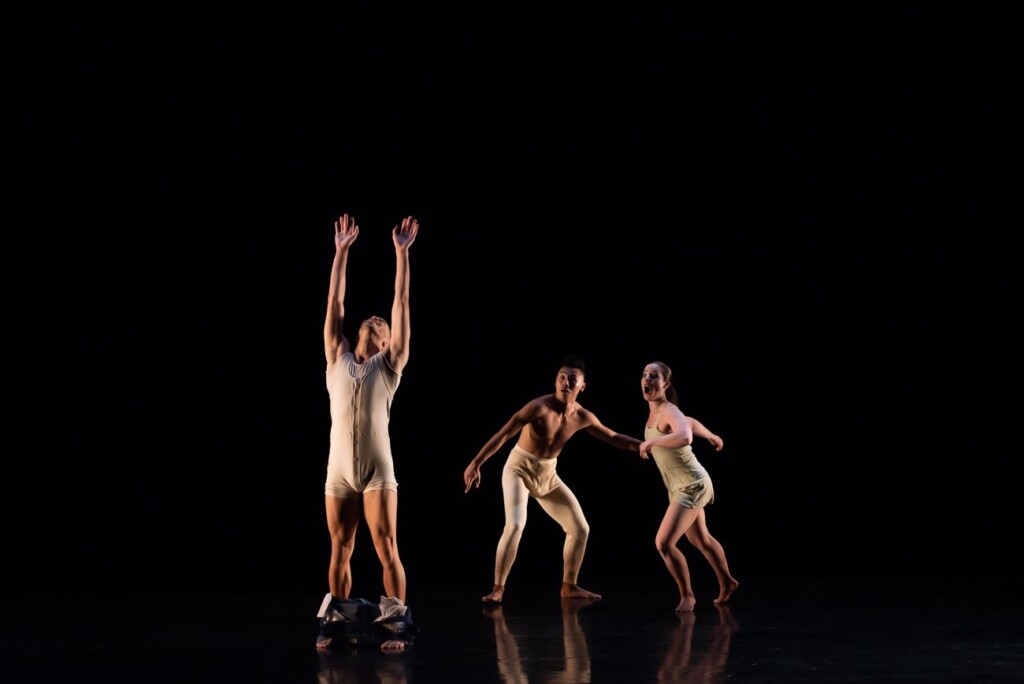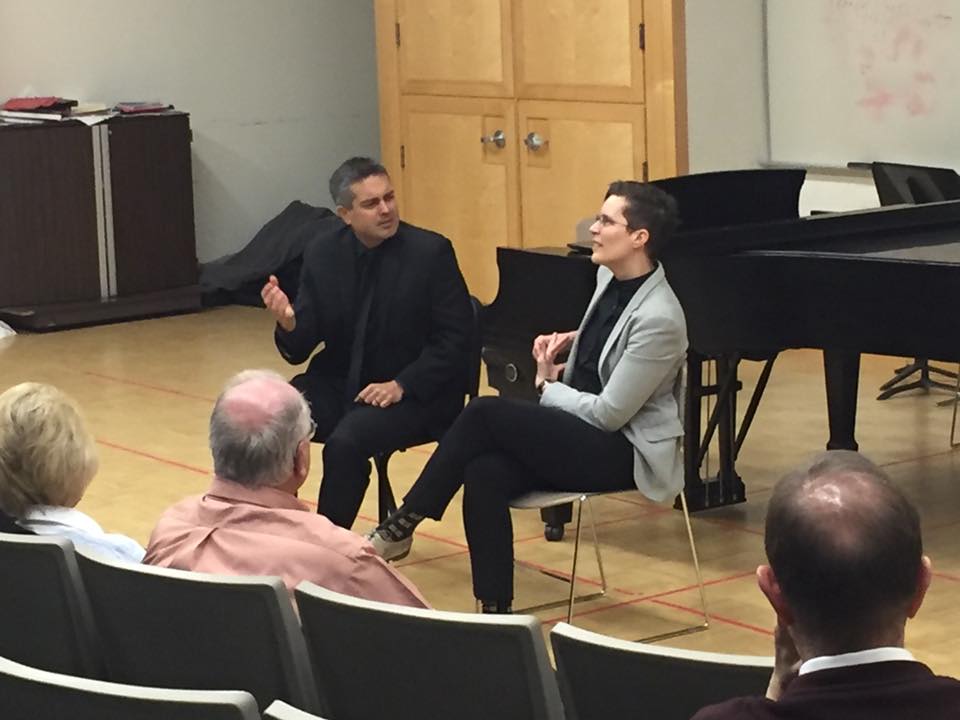This year’s selection in The Utah Review of the top ten moments of the Utah Enlightenment in 2022 was easily the quickest to lock in, considering the possibilities. There were no close calls. The ten selections were a slam dunk. This year, however, presented the opportunity for a twist. While nine of the ten selections are presented in no particular order, the tenth one chosen signifies the top moment of the Utah Enlightenment selections for 2022. That selection will now set the benchmark, with each year’s top 10 moments.
Pioneers, mavericks, creative entrepreneurs, trailblazers and other descriptive nouns are commonly used in many realms, and when applied in the arts, such labels can carry meaningful distinctions. This sentiment is embedded in this year’s list. This reiterates a point that has become central to The Utah Review’s chronicle of the artistic and creative works placed under the aegis of the Utah Enlightenment. As mentioned in previous years, they do more to serve than the purpose of “art for art’s sake.” They elevate the contemporary experience – with the sum of its tensions, problems, conflicts, disappointments and crises – to an enthralling sensation of healing, revelation, atonement and empowerment. They also represent new directions which always are worth the efforts in taking risks.
The following nine selections are presented in no particular order. Links to the original articles are included in the listings. The tenth and final selection will have the distinction as top ranked moment of the Utah Enlightenment in 2022.

An outstanding experience from this year’s Great Salt Lake Fringe Festival, The Combat, a production by Opera Contempo and NEXT Ensemble was a superb adaptation of an early 17th century protean opera that was written in the form of a dramatic madrigal. The work is a bracing contemporary version of Claudio Monteverdi’s Il Combattimento di Tancredi e Clorinda, set to a poetic libretto by Torquato Tasso.
The work was composed in 1624 and premiered in Venice during The Carnival celebration. In 2022 at Fringe, The Combat was presented by two Utah-based collaborators, Opera Contempo and The Next Ensemble, featuring a score by David Campbell, which adapts and magnificently fleshes out Monteverdi’s original.
Directed by Emilio Casillas and produced by Mandi Barrus, the production of this romantic tragedy became a brutal online war of flame-throwing rhetoric between the two main characters. While the characters exist in the virtual world, the dimensions of their personalities were amplified by spot-on choreography by Karllen Johnson, which added the emotional textures that propel Tasso’s original libretto and ratchet up the dramatic tension. The company made remarkably effective use of the tiny stage space, which adds to the exhilarating immersive impact of the performance.

The life redeeming value of self love was among the epiphanies in the outstanding two-hander play Dreamers by Ariana Broumas Farber. Directed by Stephanie Stroud, the site-specific production was a collaboration between Immigrant’s Daughter Theatre and the Wasatch Theatre Company.
The play is set in a cramped Bronx apartment, revolving around the chance encounter between Donatello Angelo Bucci (a/k/a Donnie) and Svetlana Orlova, whose name translates from Ukrainian to “Holy Eagle.” The two actors – Sophia Van Nederveen as Svetlana and Tyler Kline as Donnie – extruded all of the dynamite truths in Farber’s no-holds-barred script. This is intimate chamber theater par excellence. Farber worked quickly and effectively to capitalize on the immediacy of the news of the war and the waves of Ukrainian refugees that spread across the globe, with many also ending up in the U.S. But, Dreamers also reminds us of how western countries such as the U.S., Canada and Germany have let down refugees who have similar concerns and predicaments like Svetlana.

The hard realities of the family drama circling the inheritance of a loved one’s estate rarely require a boost from a fictional license. In The Whole Lot, a wholly Utah-made independent feature length film, the family drama arising from such an event is given a riveting rendition, rich in tension and bolstered by marvelous results in all aspects of production. The Overcranked Productions film, directed by Connor Rickman and written by Matthew Ivan Bennett, premiered at the 2022 Philadelphia Independent Film Festival.
The film has attracted a good amount of attention since its premiere. It also has been an official selection at the Mumbai IndieFilm Festival, Kansas City Underground Film Festival, Independent-Star FilmFest, Mesa International Film Festival and Erie International Film Festival. Awards have included Best of Drama at Philadelphia Independent Film Festival, Outstanding Acting Award (for Sarah McLoney) at Kansas City Underground Film Festival and Narrative Silver Award at Independent-Star FilmFest.
The film, with a tight running time of just under 75 minutes, is an outstanding example of cinematic entrepreneurialism par excellence. Directing a self-financed project, which was augmented by a Next Level Grant from the Utah Film Commission, Rickman achieves remarkable impact on a $15,000 budget. He recruited Bennett, one of Utah’s top playwrights who demonstrates handily his finesse in the screenwriting genre. The film was shot in five days on location in the Snyderville Basin in Utah’s Summit County. In a director’s statement, Rickman explains, “The Whole Lot was born from a need to create without permissions imposed by external gatekeepers. Having tried and failed so many times to fund other scripts through traditional means, I decided instead to focus on the possible.” He adds, they “adhered to … strict limits to the script and production philosophy: one location, minimal characters, a story unfolding in real-time, long takes relying heavily on the actors’ timing and a script written to enable their success.”
Dance films (screendance) have become a well developed genre in short films, particularly as video art and documentary. There are film festivals dedicated to this genre. Likewise, dance films also have been curated for various festival slates, including the Fear No Film program at the Utah Arts Festival. Some are treated as installations in exhibitions at museum galleries, including the Utah Museum of Fine Arts and the Utah Museum of Contemporary Art. Just seven minutes long, Rachel Barker’s Sedimented Here stands out as one of the most impressive of the genre that The Utah Review has screened. It truly melds two of Utah’s most substantial strengths in creative expression – dance and documentary filmmaking. Barker’s cinematic statement, filmed in Moab, synthesizes the visceral athleticism of dance with the pristine beauty of the otherworldly red rock landscape that tempts and lures many to Utah. But, something even more consequential emerges from the film for anyone who visits, absorbs and engages with this extraordinary desert landscape. Our place and presence should not compromise nor diminish the dignity and integrity of this natural wonder.
Comedy is always difficult to achieve, especially in contemporary dance, but in the world premiere of LajaMartin’s The Bunker, the choreographic creation by Martin Ďurov and Laja Field, the objective was mastered brilliantly. The work capped Precipice, the outstanding 59th season opener for Ririe-Woodbury Dance Company. LajaMartin, as noted previously in The Utah Review, are breathtaking in the visceral expression of their creations, which often are filled with the duo’s trademark elements including drama, romance, comedy, props and their consistently thrilling movement language.
The Bunker started from an amalgam of pop cultural icons. Just imagine that Biosphere 2 meets reality TV classics such as CBS’s Big Brother, MTV’s The Real World, Bravo’s Below Deck and Vanderpump Rules, with RuPaul’s Drag Race thrown in for a bit of hot spicy tea. And, the six dancers (Peter Farrow, Megan McCarthy, Alexander Pham, Fausto Rivera, Sasha Rydlizky and Miche’ Smith) reveled in the theatrical roles, which the LajaMartin choreographers cast for them. In The Bunker, the dancers reminded of the hippie theatrical group that became part of the pseudo-scientific venture called Biosphere 2 in the 1990s (which later was documented in an excellent Sundance film, Spaceship Earth). Despite morale which crumbled and the members had turned against each other as rivals throwing cups and utensils against each other, the greatest achievement of the experiment was the fact that the same number of people who went into the biosphere came out at the end. Happily, the same thing happened in The Bunker. Indeed, The Bunker demonstrated how human stability can unravel in a closed system but the comedic opportunities, which pop up in ample portions including text, live video images and stills, also emphasize, whether in art or in science, that one should never fear failure because otherwise it will stop someone from testing pioneering and enterprising ideas. The musical score included smart, relevant samples including Bruno Mars’ Leave the Door Open, Rupert Holmes’s Escape (the Pina Colada Song) and Ďurov’s original remix of Journey’s Don’t Stop Believing. Overall, LajaMartin and the brave sextet of dance artists pulled off The Bunker magnificently.
Meanwhile, Hard Times, a work that Bill Evans set in 1973 during his Repertory Dance Theatre (RDT) tenure and which was last performed in 1985, proved to be the artistic stunner in the company’s season opener. It is one of the most complex works in the RDT repertoire, because its emotional and technical demands for the three artists performing it require them to evoke and express the built-in tensions of the Appalachian hillbilly stereotypes and their counterpoints. There are many dualities of meaning. Butting up against the misguided belief of backwardness is the charm of nostalgia. Confronting the image of ignorance or redneck caricatures is plainspoken wisdom of the earth. The lazy rube stereotype is challenged by the unrelenting pace of sweat and toil, while stubbornness is both a strength and a source of frustration, which ends up sometimes being acted out in force and abuse. For the closing night performance, the trio – Lauren Curley, Daniel Do and Jacob Lewis – executed the complexities with exceptional results. There is a roller coaster of emotional highs and lows, as Evans sets the characters of his composition as doing their best to survive The Great Depression and other setbacks during the 1930s.
In Remembering Together, a show at The Utah Museum of Contemporary Art (UMOCA), Heydar Rasoulpour exemplifies how many Iranian artists have found Expressionism as a potent stylistic language. They create paintings that vividly convey emotions, beliefs and reactions, which normally remain hidden from the public, a result of living in an Islamic Republic society where one cannot openly criticize or challenge it without consequences. Born and raised in Iran, Rasoulpour studied both visual and performing arts and graduated from the Tehran Fine Art School in 2012 for painting. Four years later, he came to the U.S. as a refugee and has steadily expanded his portfolio of excellent work.
Rasoulpour’s paintings are subtle, complex, poetic expressions of loneliness, isolation, anxiety, displacement and nostalgia. The paintings came from a challenging period in his life. As Rasoulpour was beginning to feel some degree of comfort as an outsider who came to the U.S., the COVID-19 pandemic happened and he suddenly was thrust into a new period of isolation. He is a relatively young artist but his paintings convey a mature intelligent sense of melancholy without making them come off as exaggerated expressions of melodrama. The counterpoint of solitary figures as apparitions and the warmer representations of the Iranian family community is elegantly balanced. Fragile contexts are common experiences for the refugee, especially because not only do they cross geographical borders but also cultural and psychic ones. In their new home, refugees need time and space to feel confident and comfortable enough to find ties and ways of anchoring themselves to a new community. The fact that the pandemic happened just a few short years after Rasoulpour arrived reinforced the psychic impact of feeling displaced and isolated once again.

A uniquely synthesized public art installation in the ACME Lab exhibition at the Utah Museum of Fine Arts, David Rios Ferreira: Transcending Time and Space, featuring work and writing by artist Denae Shanidiin demonstrated exceptional multidisciplinary impact in the meticulous synthesis of Shaniidin’s work with that of Ferreira, whose works emanate from themes, tropes, philosophies and ideals that come from science fiction, pop music, and the foundations of atmospheric memory and digital expression. There also were opportunities for community visitors to interact with and share their own experiences of love, loss and memory. The show complemented the mission of Restoring Ancestral Winds, a Tribal coalition responding to the violence perpetrated on Indigenous communities within the Great Basin and strengthening the traditional values of Indigenous relations. The instincts that Ferreira and Shanidiin expressed in their work were, indeed, much older but undeniably both artists have carried them in their bodies throughout their lives. These centuries-old instincts precisely embody what many artists, writers, musicians, filmmakers and others subconsciously turn to in creating work that builds upon the ideals of atmospheric memory and makes these philosophical considerations tangible and edifying for us.
Unquestionably, one of the year’s top musical events of historical significance, Jason Hardink’s astonishing three-concert evert Concord/Revisited at Westminster College, celebrated the centenary of Charles Ives’ Concord Sonata. On the opening night, it was Hardink’s refreshing, clarifying approach that teased out the Transcendental core of the Ives sonata. On the second evening, he premiered three works commissioned for the project. They included Inés Thiebaut’s panta rhei, which included electronics, a magnificent multilayered symbiotic addition that sparked imagining how Ives might have used electronics had they become available in his lifetime. Steve Roens’ work Promontories riffed nicely on the rowdy, playful and frankly comic character of the Concord Sonata’s Hawthorne movement, while framing it in a contrapuntal package that also suggested a good deal of spaciousness in the music. Jason Eckardt’s a melody which the air had strained, which references a line from the Sounds chapter of Thoreau’s Walden Pond, emerged as the perfect 21st century companion piece to the fourth movement of the Concord Sonata.
The final concert of the event was dedicated to Anthony R. Green’s The Baldwin Sonata, epic in its comparative scope to the Ives sonata. A comprehensive ode to the literary legacy of James Baldwin, the sonata’s four movements are titled, Going, Telling; The Outing (Queering existence); How Much I Owe and Facing Reality (the changing same). Green’s approach was different from how the other composers approached their respective commissions. Green found the parallel that inspired Ives to create the Concord Sonata in the first place. Ives had taken the unique opportunity to write about local authors, who were alive when he was growing up in the mid-19th century. Baldwin, who died when Green was still very young, is a monumental influence for the composer. Thus, the sonata comprises quotations and other elements that have been instrumental in Green’s life, much in the same way that Ives incorporated those of his own life in the Concord Sonata. There is an incredible amount of spaciousness in the 70-minute work, which includes a mountain of musical material but it also is those spacious moments when the listener has enough time to absorb what they have just heard, which Hardink captured in every instance. Of special note was the second movement, The Outing (Queering existence), a tremendously effective musical rendering of the 1951 short story (The Outing), which represents the first Baldwin published work referencing the author’s sexual identity and formative experiences.

THE UTAH REVIEW’S TOP MOMENT OF THE UTAH ENLIGHTENMENT IN 2022:
The reverberating power of this final selection made it easy to establish a new tradition of naming a top Utah Enlightenment moment for the year. This will become the benchmark for future years.
In the world premiere of Carleton Bluford’s The Clean-Up Project, it was evident that another Plan-B Theatre production was having the usual very good opener. Bluford’s script, about a swift revolution that has transformed the country and flipped the power structure, is complex in its emotional sensations of a panic attack with the rhythm approximating that of a runaway train.
And, then there was the unsurpassed, unforgettable performance by Latoya Cameron as Jordan, who transformed the performance into that rare perfection of flow on stage. Momentarily, the throbbing heartbeat sounds in the stage design signaled a panic attack might occur but then Jordan responded. It glided on a gust of wind that scoured out the valley of all pretensions of civility and the social conventions of pleasing others for the sake of a status quo that always has been unhealthy.
Suddenly, everything in the performing space became like wallpaper. We were witnessing a full immersion in the dramatic text. Cameron’s performance was a fully fleshed convergence of every drop of blood, sweat, tears, fears, confidence, self identity, risks, faith, skepticism, disbelief, success, disappointment, hope and despair that has ever embodied the experience of Jordan and every Black woman. Even as she had yet to discover what her fate might be, Jordan could finally breathe without constrictions or restraint. Its rare strength was how it supported the rhythmic lifeblood of the narrative without sacrificing a beat.
Cameron’s performance as Jordan was that extraordinary phenomenon where an actor not only lives in the role but also has allowed the role to live fully through her. Every vestige of self-consciousness disappeared and the sense of time became distorted, which fortified the transcendental flow of the equally extraordinary narrative that occupied the entire space in the theater. For those of us attending and observing, the experience was at once humbling and mystifying as it was clarifying and piercing in its fully fleshed truths. It is these experiences which nourish and sustain our quest for empathy and genuine humanity. From that point, the remainder of the performance was perfect, unquestionably one of the most potent, emotionally impactful pieces of ensemble work I had seen on any local stage among the hundreds of performances I had written about in The Selective Echo and The Utah Review.





